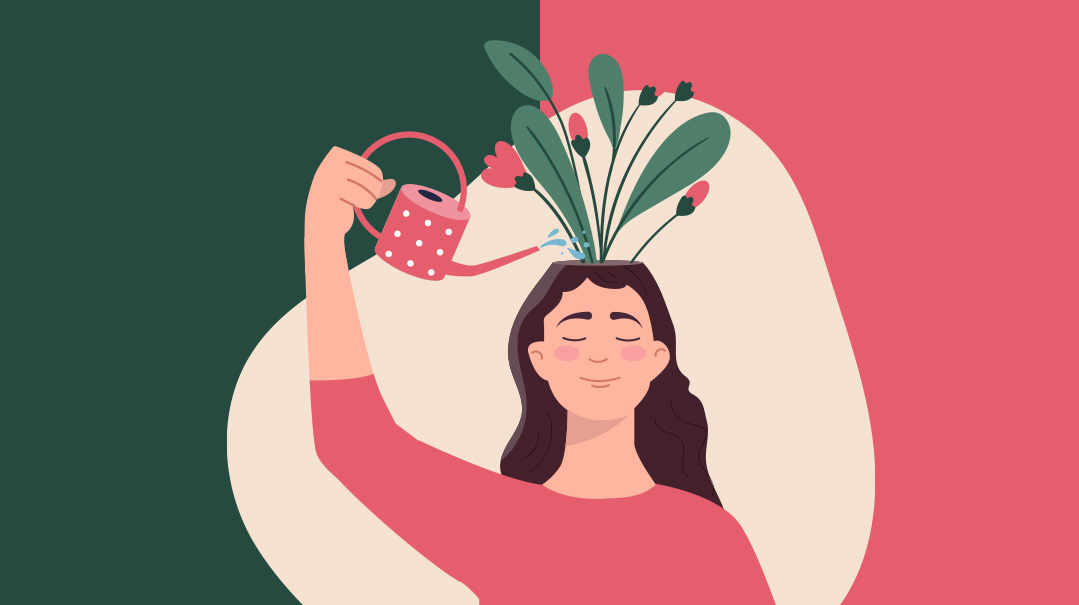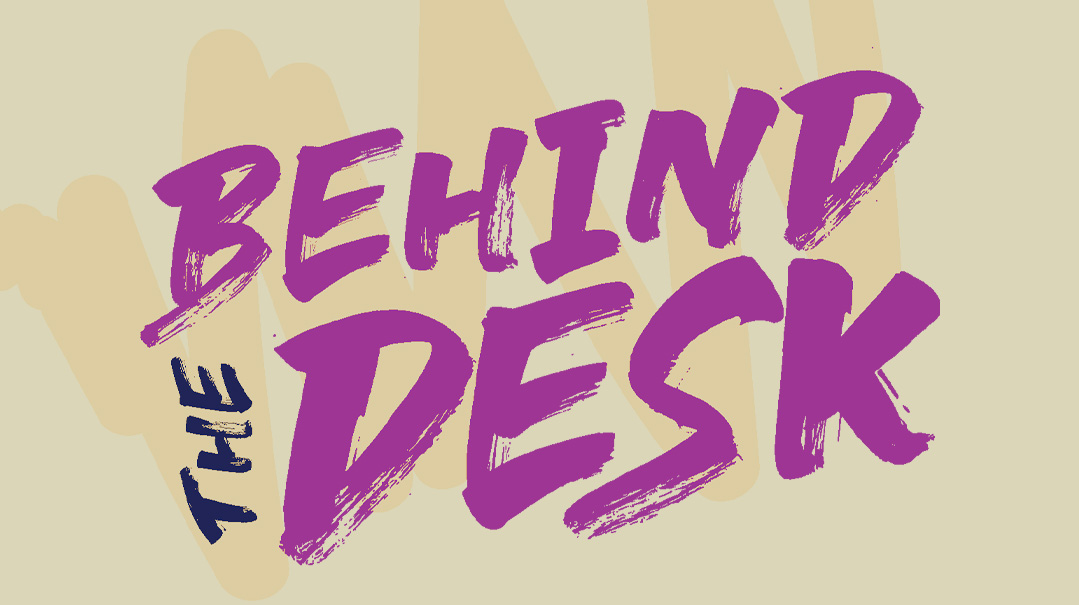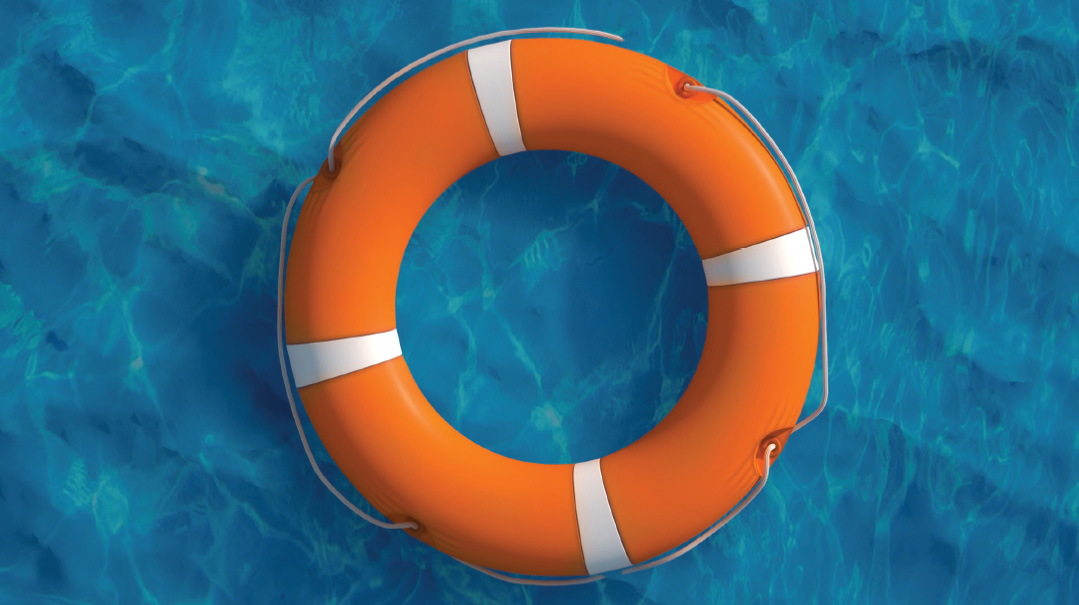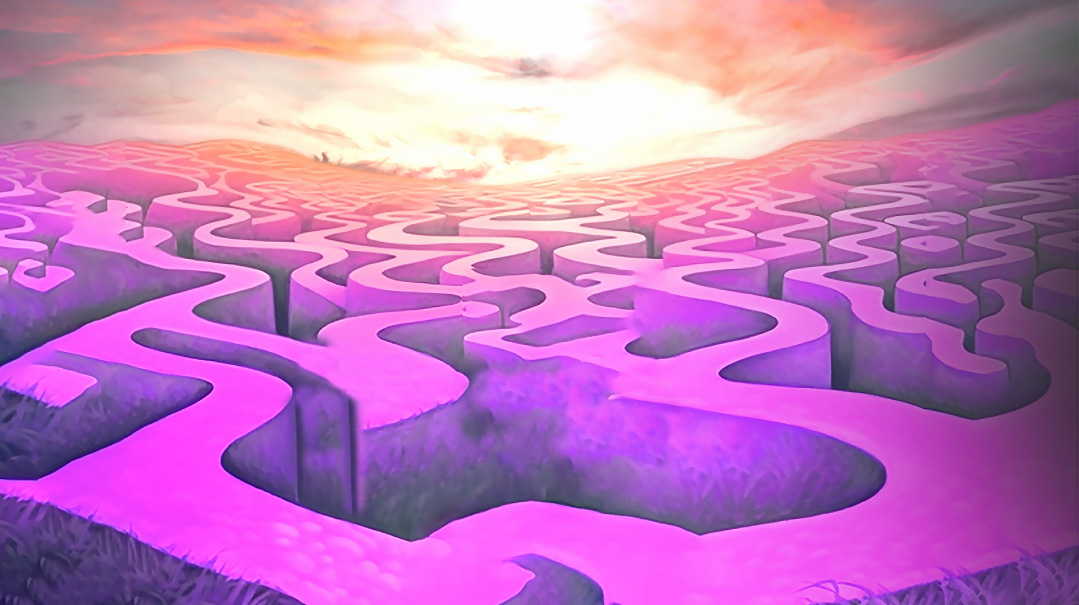Back to School with Junior Rheumatoid Arthritis
| August 30, 2022Junior Rheumatoid Arthritis, or JRA, is a condition that appears in children and teens and presents as chronic joint pain

Summer’s coming to a close, and school is starting. A new start, new teachers, new opportunities, and a chance to reunite with friends and classmates. But certainly, there are challenges that can come with it too. Add a chronic medical condition to the mix, and things can get complicated.
Junior Rheumatoid Arthritis, or JRA, is a condition that appears in children and teens and presents as chronic joint pain.
So how does life look for a teen with JRA? Yes, they can experience all the fun and wacky aspects of being a teen, but depending on the severity of their condition, physical mobility and function may be affected for days, weeks, or even longer for some. Pain might be a chronic companion. Participating in usual teen activities can sometimes be physically impossible. Understandably, this can all be emotionally taxing, and in the already emotionally charged years of teenagehood, it takes a lot of inner strength to get through this challenge. But it can be done!
Life with JRA
Knowing what you’re dealing with can be a big step towards dealing with JRA effectively. But often, it can be hard to get an accurate diagnosis. Teens often need to undergo many tests and doctor visits until they are finally diagnosed with JRA.
Eventually, the first major hurdle is overcome: a pediatrician or a rheumatologist (a doctor with specialized training in treating inflammatory rheumatic disease) diagnoses JRA. And then comes the (not so) fun part : finding the right treatment that will consistently and effectively relieve the symptoms.
Treatment isn’t always straightforward — take a pill twice a day and poof, you’ll be fine. Unfortunately, it doesn’t work like that. It can take a long time to get the right meds, at the right dosages, and the medications themselves are no magic bullet — they often come along with tough side effects.
“It’s very hard at the beginning, when it isn’t clear what’s going on,” shares Amy, who suffered from JRA as a teen. “You’re looking for a diagnosis, some name for this monster taking over your body — because when you get a diagnosis, you hope you can finally get effective treatment. But at the same time, you’re being given all these meds to help control the pain and internal swelling, and they all have side effects. I was constantly wondering if what I was experiencing was part of whatever was wrong with me, or if it was just because of the medications I was taking.”
Shani, who was diagnosed with JRA when she was 14, echoes this. “The side effects of the treatment were horrendous,” she says. “The particular meds I was given made me gain a tremendous amount of weight. I looked like a balloon. I was so embarrassed.”
Amy was 15 when her symptoms first appeared. “Though I’d always been a ‘cracky’ person,” she acknowledges. “My joints were constantly cracking, and I seemed to have weak bones — I had a bunch of broken bones as a kid and a lot of sprains. There was also this weird thing — every time it rained, my wrists hurt.” One year, her parents decided to homeschool Amy. “It was the best thing for me,” Amy admits. “I spent a lot of that year in bed.”
What changed when Amy was 15? What made her finally search for a diagnosis, when she’d always had these difficulties?
“I had a lot of new, weird symptoms,” she says. “I remember being in the grocery store and stopping to lean on the cart. It was like my joints just weren’t working. It was so painful.”
JRA can cause discomfort and pain in everyday activities — walking, changing positions, and navigating stairs. “Going down the stairs was the hardest,” Amy explains. “It hurt so much. My knees were just in so much pain.”
There were also odd rashes. Both Amy and Shani recall red, blotchy rashes. In fact, for Shani, that was one of the first signs that something was wrong. “They thought it was an allergic reaction to the antibiotic I was taking,” Shani says. “But then there was this awful joint pain.”
Another reason it’s hard to get a diagnosis is because JRA can mimic a lot of other conditions, including lupus and other autoimmune diseases. “At one point the doctors thought I had a serious, potentially dangerous disease,” Amy says. “It was a scary time. I had an MRI and I was constantly going to doctors and being poked and prodded. I had to take loads of blood tests. Everyone was trying to figure out what was wrong with me. It was very stressful and really intense. All the doctors asked the same questions, but none of them seemed to have any answers. Like I said, the pain often kept me in bed — my knees, my ankles, my wrists. I couldn’t walk. Then I started experiencing vertigo, severe dizziness. But I didn’t know if it was just because of the meds I was taking. I also experienced a lack of appetite, another symptom of JRA, and I lost quite a bit of weight.”
What was it like to finally get a diagnosis? Amy saw it as a relief. “JRA didn’t seem so bad,” she says. “Unlike the disease the doctors first suspected I had, JRA wasn’t fatal, and with the proper treatment I could live a normal life! Okay, so I had achy joints. But it could have been so much worse. Yes, it affected me on a daily basis. Yes, I loved gymnastics, and that was hard. Yes, I had to stop crocheting because it hurt my wrists too much, and that was hard. Yes, I couldn’t walk around. That was hard too. But I was going to be okay! “
Amy is honest. “I was sad and depressed a lot of the time.” She describes how throughout the winter season, her painful knees would just collapse under her. “It was a hard year,” she admits.
Kids and teens with JRA often take a combination of several meds to stabilize their condition, and avoid what are commonly called “flareups,” periods where symptoms worsen.
“When I was 16, I stopped taking all of my medications,” Amy says. “I decided to just deal with the pain; I was sick of all the side effects.” As the years went by, Amy’s pain lessened, which is often the case with JRA.
Shani agrees with everything Amy says. “I missed half of tenth grade,” Shani says. “I couldn’t walk. I had a lot of thoughts: Why isn’t my body working? Why can’t I just be normal? Why can’t I be like everyone else?” She also felt misunderstood; her parents were bewildered by her symptoms, she was in and out of school, and she felt very lonely.
These are common emotions, familiar to many teens, but as Shani says, “JRA brought these emotions to the forefront.” She also talks about how difficult and painful moving around and walking became. “We tried everything,” she says. “All the meds, lots of steroids, and even injections of an immuno-suppressant drug called methotrexate, which is used in severe cases of JRA.” Methotrexate works by slowing down the immune system and reducing the inflammation that is part and parcel of JRA. (The inflammation around the joints is what causes the trademark pain and stiffness.)
Shani shares that she had some very difficult thoughts concerning what she may have done to deserve the pain and discomfort that came along with JRA. “I kept thinking maybe I’d done something terribly wrong, and that’s why I got JRA.” She says she spent the years she was 14 and 15 struggling mightily. “I wasn’t managing very well,” she says. “It took a long time to figure out the right mix of medication and to work through my challenging thoughts. My mother didn’t know what to do with me. It was a very difficult experience. My body just wasn’t working the way it was supposed to! I didn’t know what to do. And neither did the doctors.”
The great unknown is terrifying and emotionally exhausting. Teens with JRA are left wondering: What’s going to be? Is this ever going to end?
When Shani was 18 she stopped her meds cold-turkey. “I went to Israel,” she says, “and I just left that part of my life behind. I left all the negative associations and tried to start over in a brand-new place.” Amy had a similar experience: “Somehow, inexplicably, going to Israel really helped. I don’t know if it was the altitude change or what, but whatever it was, I only had one really bad flare-up there.”
Shani candidly sums up her experiences. “Look, it’s part of my journey, part of my life. This is from Hashem, and I can see how much it’s helped me grow.”
The Mind-Body Connection
Both Shani and Amy share their belief that JRA — as well as other autoimmune diseases — may be exacerbated by emotional imbalance. It’s a real disease; the pain is absolutely real and physical. But perhaps, some suggest, the degree of inflamed, swollen and sore joints can, in part, be affected by emotions.
Emotion, trauma, and internal sadness, anger or pain take residence in our bodies. When we don’t clear them out effectively, our brain, in desperation, tries to get our attention in other ways. “It’s a cry for help,” Shani explains. Many practitioners today are cognizant of the mind-body connection, and the way our inner world affects our physical body. Other physical diagnoses, which cause real, physical suffering, may also be attributed to unexpressed emotions: IBS (irritable bowel syndrome), migraines, back pain, psoriasis, and others. In fact, a medical doctor, Dr. Edward Bach, who passed away in 1936, was well ahead of his time when he taught that the key to physical well-being is emotional well-being.
Many professional, modern-day doctors agree. Dr. Erika Saunders, a professor and chair of psychiatry at Pennsylvania State University, puts it this way: “The only way to get — and keep — people well, is to treat the mind and body as two parts of a whole.”
Dr. John Sarno is well-known for his work in treating “incurable” chronic conditions with his mind-body approach. His teachings have helped countless people. Through reading his books and applying his teachings, many people have discovered a very safe and effective way for dealing with chronic pain.
“I used self-help tools,” Shani says. “I learned to become more aware of my emotions. Focusing on my emotional health had a huge effect on my JRA. It’s a chronic condition, yes, and it hurts! But when I became calmer and happier, my symptoms did improve. I think that part of the intensity of the symptoms comes from the despair that there is no way out, that this is never going to end.” She also shares that even as an adult, she sees a clear connection between her physical health and her emotional wellbeing. “Anytime that I’m tense, stressed out, or have a lot going on, I find my symptoms worsen.
“Nowadays, people talk about the mind-body connection,” Shani adds. “But when I was a teen, no one talked about it.” She maintains that anyone struggling with JRA could benefit greatly from therapy and from joining a support group (see sidebar).
“It’s easier to do this work as an adult,” Shani avers. “There’s more self-awareness. But teens are definitely capable of it too.”
Shani advises becoming aware of possible negative thought processes. “You think, ‘This is going to hurt.’ Or you think, ‘Well, I did that activity, so now this or that joint is going to start hurting.’ Can you change that narrative?”
Shani ended up becoming a nurse, and she attributes that, in part, to her experiences as a teen. “I wanted answers,” she says. “I wanted to learn more about my body. And I also wanted to help other people. Through my work as a nurse, I meet so many people struggling. JRA is more common that you realize. When I was a teen, there were very few people who had even heard of it. Now it’s more commonplace.”
Alternative Approaches
Shani also feels that less conventional approaches can be used to significantly relieve suffering. “Try acupuncture,” she urges. “If acupuncture isn’t your thing, or doesn’t seem to help, don’t give up. Find a safe, halachically approved practitioner who can help release negative energies within the body.” Shani explains that negativity running through the body will find each person’s “weak spot” — whether it’s the joints, in the case of JRA, or other affected parts of the body in other conditions. There are other options, too — Shani recommends trying reflexology or cranial sacral therapy as well. “It’s important to know that there are alternative treatments,” Shani stresses. “If there’s a way to get off the meds that come along with horrible side effects — some of which can have long-term side affects — wouldn’t you try?” Shani says that she herself has suffered long-term effects from the some the meds she took as a teen. “Explore your options,” she says encouragingly. “Give your body the tools it needs to heal.”
What is JRA?
You might be familiar with the word arthritis to describe an elderly person’s joint pain, and you’d be correct to associate that with this diagnosis. When arthritis and chronic joint pain appear in children and teens, they may have JRA. Short for Juvenile Rheumatoid Arthritis (also known as JIA, Juvenile Idiopathic Arthritis), this is a condition diagnosed before the age of 16. There is no known cause for JRA, and no cure. The goal is to manage symptoms to allow the person to live a regular life with as little pain as possible. Many kids and teens outgrow their JRA by adulthood.
MyTEAM
Getting support is easier now than ever before. MyTEAM is a frum organization founded to support girls and young women (ages 12 to 30) who have chronic illnesses (particularly “invisible” ones) such as Crohn’s disease, JRA, POTS, diabetes, and other conditions. Several hundred young women and girls participate in MyTEAM’s programs, which include daily interactive emails, monthly teleconferences, events, care packages, and more. MyTEAM will match you up with a frum mentor and peer, both of whom have a health condition similar to your own. In addition, MyTEAM works on community awareness and education projects, including school awareness. What a great way to get support! MyTEAM can be contacted through Teen Pages.
You can do it!
Here are some tips from experts on coping with JRA:
Exercising can help you strengthen your muscles and bones and help you maintain a full range of motion in your joints. Meeting with a physical therapist to create a personalized and effective exercise program can really help.
Try to stick to your regular routine as much as possible.
Some teens do well when they are a full partner in their medical care, as they feel less lost and out of control. Knowing which meds you’re taking, what they’re supposed to be doing, and how they can affect you can help you through the challenges. Being an active participant instead of a helpless patient is empowering.
If you have a poor appetite as a result of your JRA, it might be a good idea to meet with a dietitian to help ensure proper nutrition, which is so crucial during these formative years. And eating healthy can only strengthen your body!
Try to make sure to do something you enjoy every day, something that really makes you happy. Make a list of cheer-me-up ideas and attempt one or two each day, particularly when symptoms are bad.
It’s normal to feel depressed or angry when you have JRA. Make sure you have someone supportive to talk to — your parents, a good friend, or another relative. If bad feelings persist, it’s a good idea to talk them over with a professional.
Tips for Supporting Your Friend with JRA
- Try to treat your friend as normally as possible. This means aiming to include her in as many of your regular activities as you can. Going out for ice cream? Call your friend to invite her, even if she was complaining of stiffness and pain earlier.
- Give your friend space to talk if she wants to. At the same time, don’t pry and don’t ask nosy questions.
- If your friend is experiencing a flare-up or a rough patch with her JRA, sending a “thinking of you” note with a chocolate bar or some of her favorite candy can be a real pick-me-up.
- Suspend judgment! Your friend has a chronic, painful condition. She might not always be able to participate in activities or even come to school. Accept that and always be encouraging.
Hope and Healing
Dr. James Mond, MD, PhD
Rheumatology Specialist
JRA is an inflammatory disease not unlike other inflammatory diseases that affect many people. Inflammation is a necessary reaction of the body when it encounters foreign objects like viruses, bacteria, or any foreign matter that the body does not recognize as “self.”
When the body reacts with a heavy dose of inflammation, more than might be called for to eliminate the foreign matter, or if it reacts to its own body parts, then a cascade of inflammatory symptoms step in that can be potentially harmful.
In JRA, the body is reacting with inflammation to an unknown stimulus. It differs from many of the other auto-inflammatory conditions (note I don’t call them diseases) in that many of the blood tests that would be expected to be outside of the normal range are in fact in the normal range. Also, the rate of natural remission, meaning the disease disappears without long-term treatment, is very high. Inflammation in the body triggers a host of many symptoms, much like a splinter in your finger might trigger when it is not removed and inflammation results.
Fortunately, in the last few years many new treatments have been discovered that have been shown to be very effective in minimizing all of these inflammation-associated symptoms. It is not like following a simple recipe, so the doctor may have to try a number of different treatments until he finds the one that will work best for each individual patient. While medication is helpful there are also many other interventions that have been shown to reduce pain, inflammation, and fatigue. A healthy diet has been shown to dramatically reduce inflammation, as have regular exercise, and adequate hours of sleep. It is also very important to talk about your condition of JRA openly with your friends, your teachers, and of course your parents. Bottling things up inside of you will only cause more unnecessary pain. Needless to say, you should never look at yourself like a sick person or a disabled person because that is definitely not the case. You simply have an inflammatory condition that in the majority of cases will disappear as you grow older. This inflammatory condition does not run in families and most definitely was not caused by anything you did or did not do. With the right medical intervention, and Hashem’s help, you will heal quickly.
Disclaimer: This information represents the opinions of the interviewees alone. Teen Pages does not endorse any particular treatment or medical plan. For any medical questions, always speak with your doctor.
(Originally featured in Teen Pages, Issue 926)
Oops! We could not locate your form.







